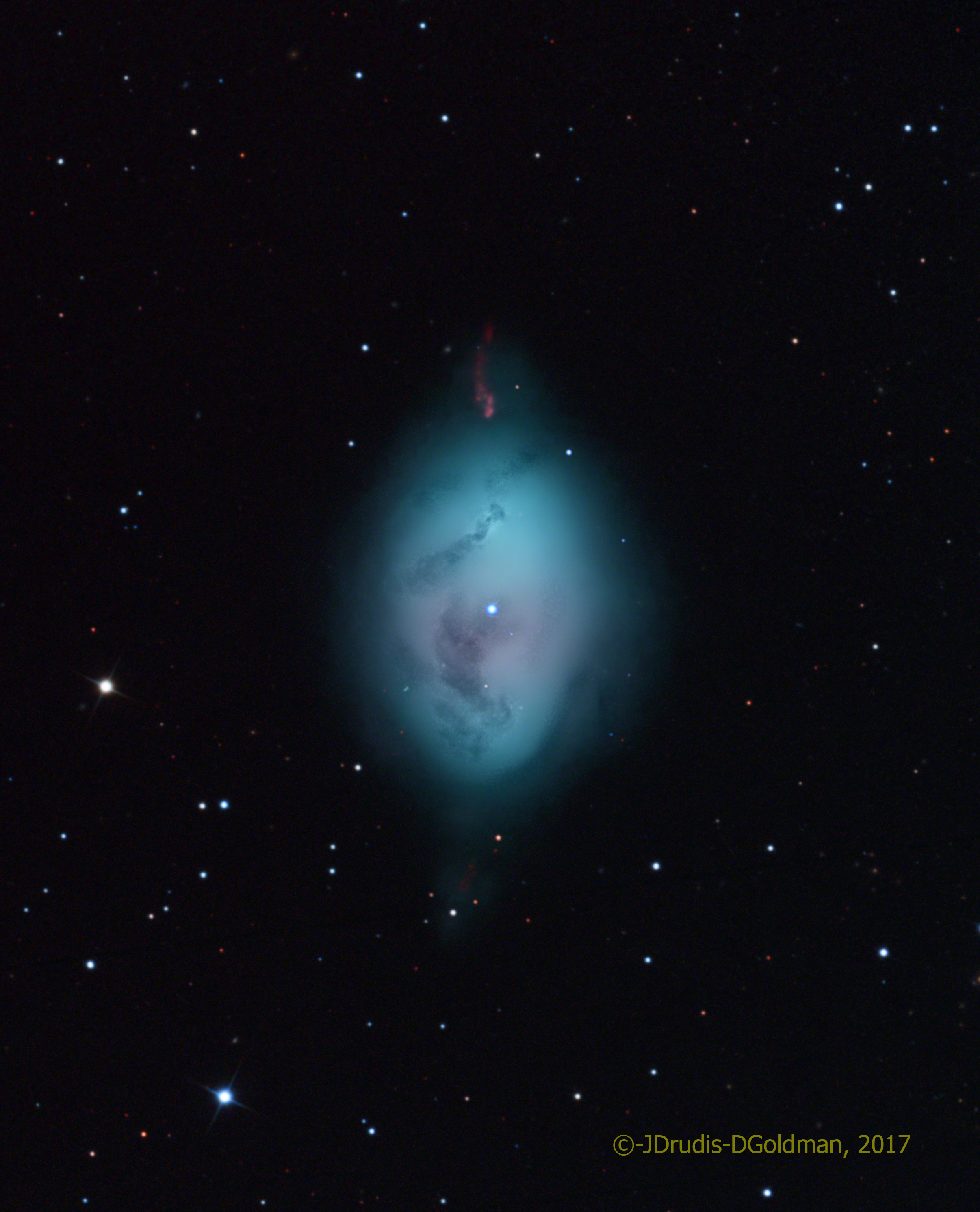
Click here for full resolution image
This image has been selected as APOD on 2018-05-11
This image is the result of a collaboration with Don Goldman (we are telescope partners at his telescopes located at the SSO, Australia). He had imaged this nebula more than four years ago and provided his data to be added into a deeper image.
NGC 1360 is, in many ways, an unusual planetary nebula. Located 1,500 light years away, in the constellation Fornax, it was discovered in 1868 by the German Astronomer Friederich Winnecke. I would like to remark three characteristics of this nebula. First, the gas envelope surrounding the central star shows a very strong OIII emission, with just some Ha around the central region, instead of in different layers (envelopes). Second, it has a strong magnetic field that, for many years has been thought (but without finding evidence) that it might be the consequence of a double central star. Very recently (end of September 2017, just a few weeks before this text is being written), Miszalski et al. found that indeed this star is a degenerate double, with two stars with masses 0.5 and 0.7 solar masses. The largest one is the remaining white dwarf.
And third, this nebula shows two jets that emit in the OIII line, but also in the NII line (661.1nm). This feature is specially strong in the upper jet. In order to better highlight this emission, additional images were taken through a NII filter. These images show how strong this emission is, as it shows stronger than the same region when taken with a 3nm Halpha filter (656nm). The result is a deep red upper jet.
Additional Information
Object
Name(s): NGC 1360. The Robin’s Egg Nebula,
Type: Planetary Nebula
RA: 03h 33m 06s
Dec: -25º 52’ 43”
Constellation: Fornax
Size (arcmin): 11×7.5
Magnitude: +9.4
Distance: 1,500 ly
Image
Date: 2013-09-27 to 29 (Don Goldman) and 2017-12-05 to 13 (Josep Drudis), both with the same equipment)
Location: iTelescope.net, SSO near Coonabarabran, NSW Australia
Size (arcmin): 22×27
Telescope: Planewave CDK 20” f/6.8
Camera: SBIG STX16803 (4096x4096pix)
Guiding: Astrodon MonsterMOAG off-axis guider
Total exposure: 26.0 hours (Ha-3nm: 6h; OIII-3nm: 12h; NII-3nm: 7h; RGB (stars only): 1h)
Processing: CCDStack, Photoshop CC 2018